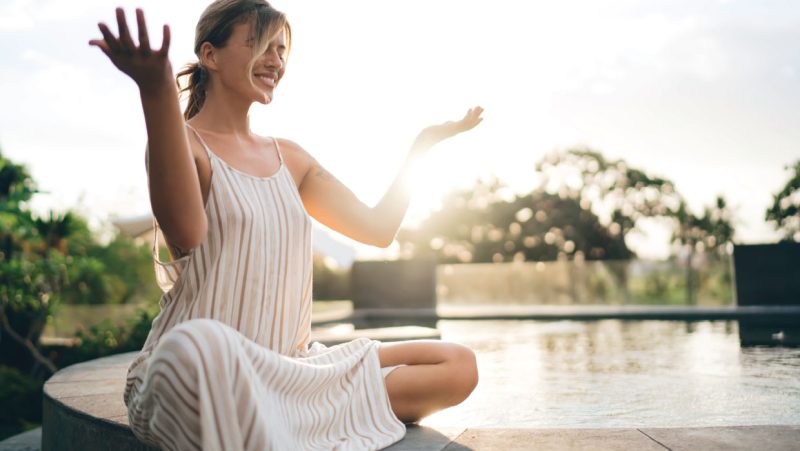
Bend, Don’t Break
Yoga for the Inflexible Body - By Josie Ferrara
Reading time: 3 minutes
Yoga often conjures images of people effortlessly twisting into pretzel-like shapes, which can be intimidating for those who struggle with flexibility. However, yoga is not about how flexible you are but rather about meeting your body where it is and gently guiding it toward greater ease and movement. Whether you can’t touch your toes or find yourself stiff after a long day, yoga offers a way to increased flexibility, improved mobility, and overall well-being.
The Science Behind Flexibility
When you stretch, you engage your muscles in a process known as the “stretch reflex,” where your muscles resist the stretch to prevent injury. With consistent stretching, your muscles adapt, and the nervous system begins to allow a greater range of motion. Yoga incorporates both static stretches (holding a pose) and dynamic stretches (moving through a pose) to gently coax your muscles into flexibility.
Regular yoga practice also improves proprioception, your body’s ability to sense its position in space, which is crucial for balance and coordination. This heightened awareness helps you move more efficiently and can even reduce the risk of injury in other activities.
If you’re inflexible, yoga is actually the perfect practice for you. Flexibility isn’t a prerequisite; it’s a result. Yoga involves a series of poses and stretches designed to gradually increase flexibility by targeting tight muscles, connective tissues, and joints. Regular practice helps lengthen muscles, improve circulation, and reduce muscle stiffness. Moreover, yoga helps to balance the body by working on both the strength and flexibility of muscles, which is crucial for preventing injuries and enhancing everyday movements.
Understanding Flexibility in Yoga
Flexibility is not just about being able to touch your toes or perform a deep backbend. It involves the ability of your muscles and joints to move through their full range of motion. This is essential for daily activities and helps prevent injuries, reduce pain, and improve posture. Inflexibility often results from muscle imbalances, poor posture, or lack of movement, all of which can be addressed with a consistent yoga practice.
Yoga works by stretching and strengthening the muscles, lubricating the joints, and increasing blood flow to the tissues. Over time, these benefits compound, leading to improved flexibility and mobility. However, it’s important to approach your practice with patience and mindfulness, avoiding the temptation to push beyond your current limits.
The Benefits for Specific Muscle Groups
- Hamstrings: Tight hamstrings are a common issue for many people, especially those who sit for extended periods. Yoga poses like the Forward Fold (Uttanasana) and Downward-Facing Dog (Adho Mukha Svanasana) gently stretch the hamstrings, relieving tension and improving range of motion in the hips and lower back.
- Hips: The hips often store a lot of tension, leading to inflexibility and discomfort. Poses like Pigeon Pose (Eka Pada Rajakapotasana) and Bound Angle Pose (Baddha Konasana) work to open the hips, increasing flexibility and releasing stored stress.
3. Shoulders and Chest: Many people suffer from tight shoulders and chest muscles due to poor posture or stress. Poses such as Cow Face Pose (Gomukhasana) and Thread the Needle (Parsva Balasana) target these areas, promoting openness and relieving tension.
4. Lower Back: Tightness in the lower back can be alleviated through poses like Child’s Pose (Balasana) and Cat-Cow Pose (Marjaryasana-Bitilasana). These poses gently stretch and strengthen the lower back, reducing pain and stiffness.
A Gentle Yoga Sequence for Inflexibility
This beginner-friendly sequence is designed to open up tight areas of the body, including the hips, hamstrings, and shoulders. You’ll need a yoga mat, a strap (or towel), and a block (or sturdy book).
- Cat-Cow Pose (Marjaryasana-Bitilasana): Start on your hands and knees, with your wrists aligned under your shoulders and your knees under your hips. Inhale as you arch your back (Cow), and exhale as you round your spine (Cat). Repeat for 1-2 minutes to warm up your spine.
- Seated Forward Fold (Paschimottanasana): Sit with your legs extended. Use a strap around your feet if you can’t reach them. Inhale to lengthen your spine, and exhale to fold forward. Hold for 30 seconds, breathing deeply.
- Reclined Hand-to-Big-Toe Pose (Supta Padangusthasana): Lie on your back and extend one leg toward the ceiling, using a strap around your foot. Keep the other leg bent with the foot on the floor. Hold for 30 seconds on each side.
- Low Lunge (Anjaneyasana): Step one foot forward into a lunge, keeping the back knee on the floor. Inhale to lift your chest and reach your arms overhead. Hold for 30 seconds on each side.
- Supine Twist (Supta Matsyendrasana): Lie on your back, bend your knees, and let them fall to one side while keeping your shoulders on the mat. Hold for 30 seconds on each side.
- Child’s Pose (Balasana): End your practice in Child’s Pose, with your knees wide and your big toes touching. Stretch your arms forward and rest your forehead on the mat. Hold for 1-2 minutes.
Yoga is a journey, not a destination. By committing to a regular practice, even the most inflexible bodies can experience significant improvements. Yoga not only enhances flexibility but also promotes mental clarity, reduces stress, and fosters a deeper connection with your body.
With regular practice, you’ll notice that your muscles become more supple, your movements more fluid, and your mind more at ease. Embrace where you are today, and with time, your body will respond with greater ease and openness.





